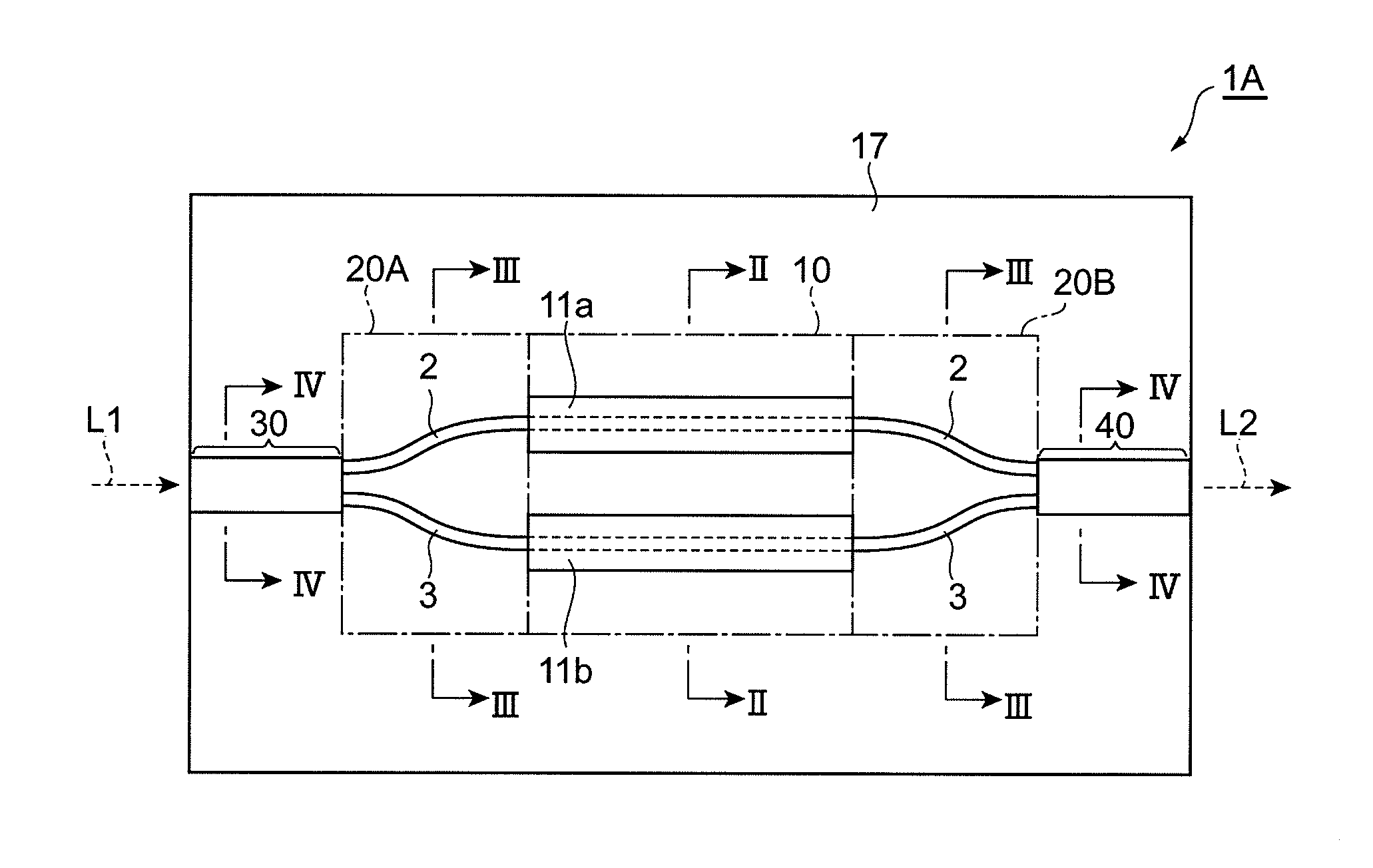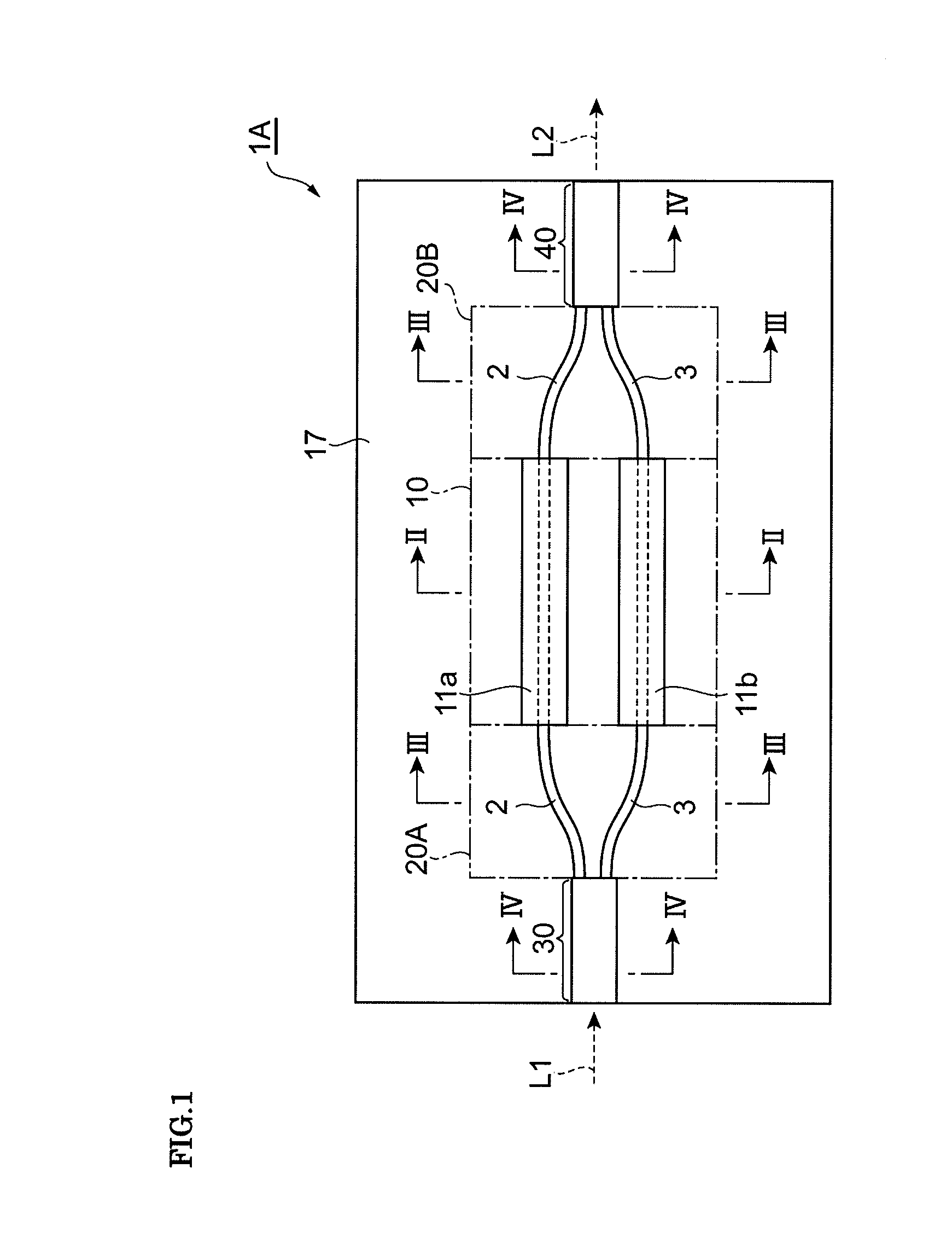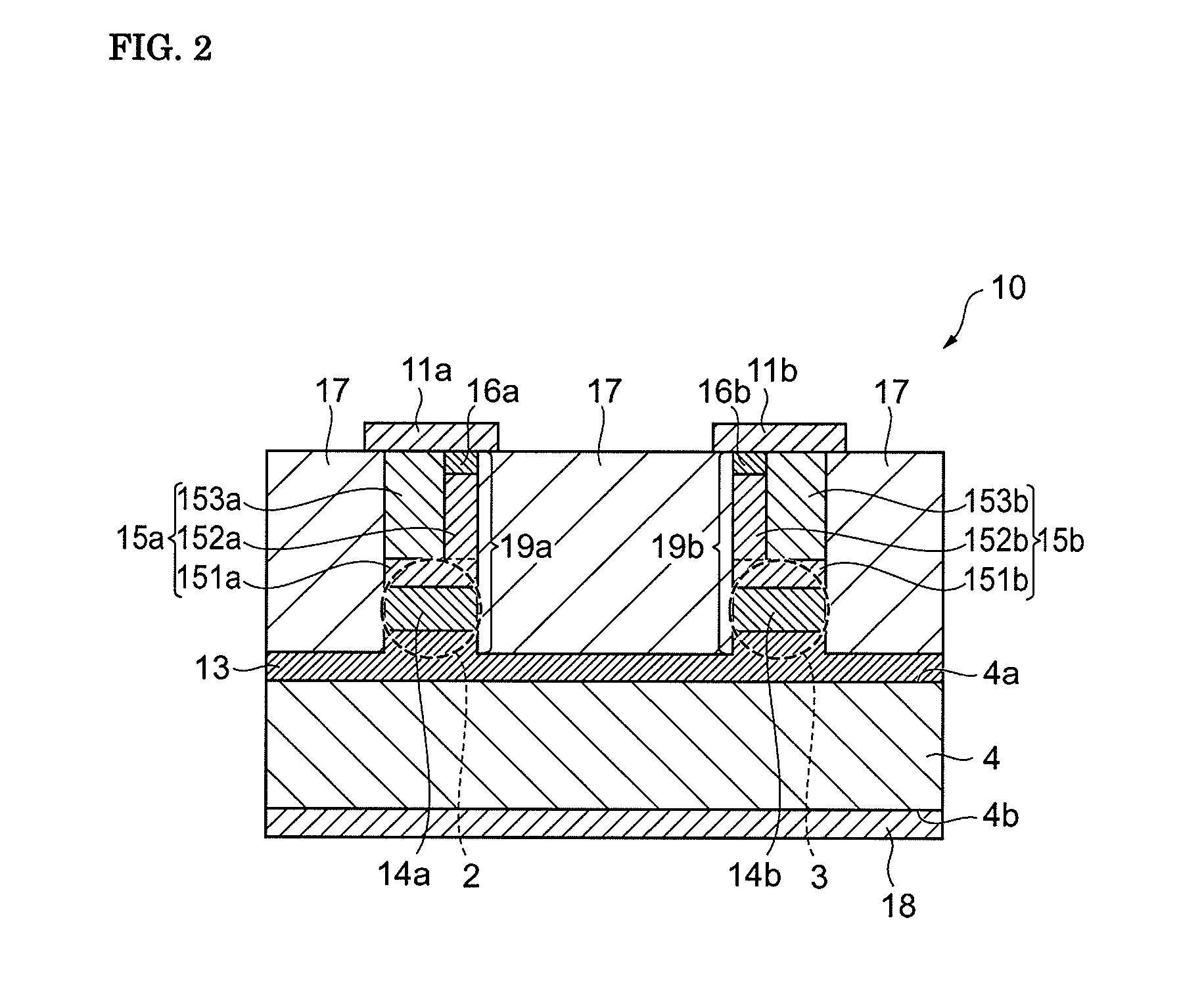Mach-zehnder interferometer type optical modulator
- Summary
- Abstract
- Description
- Claims
- Application Information
AI Technical Summary
Benefits of technology
Problems solved by technology
Method used
Image
Examples
first embodiment
[0040]FIGS. 1 to 4 are diagrams showing a structure of a Mach-Zehnder interferometer type optical modulator 1A according to a first embodiment. FIG. 1 is a plan view showing a structure of the Mach-Zehnder interferometer type optical modulator 1A. FIGS. 2, 3, and 4 are cross-sectional views of the Mach-Zehnder interferometer type optical modulator 1A shown in FIG. 1 taken along line II-II, line III-III, and line IV-IV, respectively.
[0041]Referring to FIG. 1, the Mach-Zehnder interferometer type optical modulator 1A of this embodiment includes a phase shifting section 10, waveguiding sections 20A and 20B, an input optical coupler 30, and an output optical coupler 40. The phase shifting section 10 is disposed between the input optical coupler 30 and the output optical coupler 40. The waveguiding section 20A is disposed between the input optical coupler 30 and the phase shifting section 10. The waveguiding section 20B is disposed between the phase shifting section 10 and the output opt...
second embodiment
[0092]Next, a second embodiment which is a modification of the Mach-Zehnder interferometer type optical modulator 1A of the first embodiment is described. FIG. 13 is a cross-sectional view showing a structure of a phase shifting section 60 as a modification example.
[0093]The phase shifting section 60 includes anode electrodes 11a and 11b, an n-type lower cladding layer 13, a cathode electrode 18, and two mesa structures 69a and 69b. The structure other than the mesa structures 69a and 69b are the same as that of the first embodiment.
[0094]The mesa structure 69a is a first optical waveguide structure of this embodiment and is formed on the n-type lower cladding layer 13 in the section corresponding to the optical waveguide 2. The mesa structure 69b is a second optical waveguide structure of this embodiment and is formed on the n-type lower cladding layer 13 in the section corresponding to the optical waveguide 3.
[0095]The mesa structure 69a includes a core layer 14a, an upper claddin...
PUM
 Login to View More
Login to View More Abstract
Description
Claims
Application Information
 Login to View More
Login to View More - R&D
- Intellectual Property
- Life Sciences
- Materials
- Tech Scout
- Unparalleled Data Quality
- Higher Quality Content
- 60% Fewer Hallucinations
Browse by: Latest US Patents, China's latest patents, Technical Efficacy Thesaurus, Application Domain, Technology Topic, Popular Technical Reports.
© 2025 PatSnap. All rights reserved.Legal|Privacy policy|Modern Slavery Act Transparency Statement|Sitemap|About US| Contact US: help@patsnap.com



